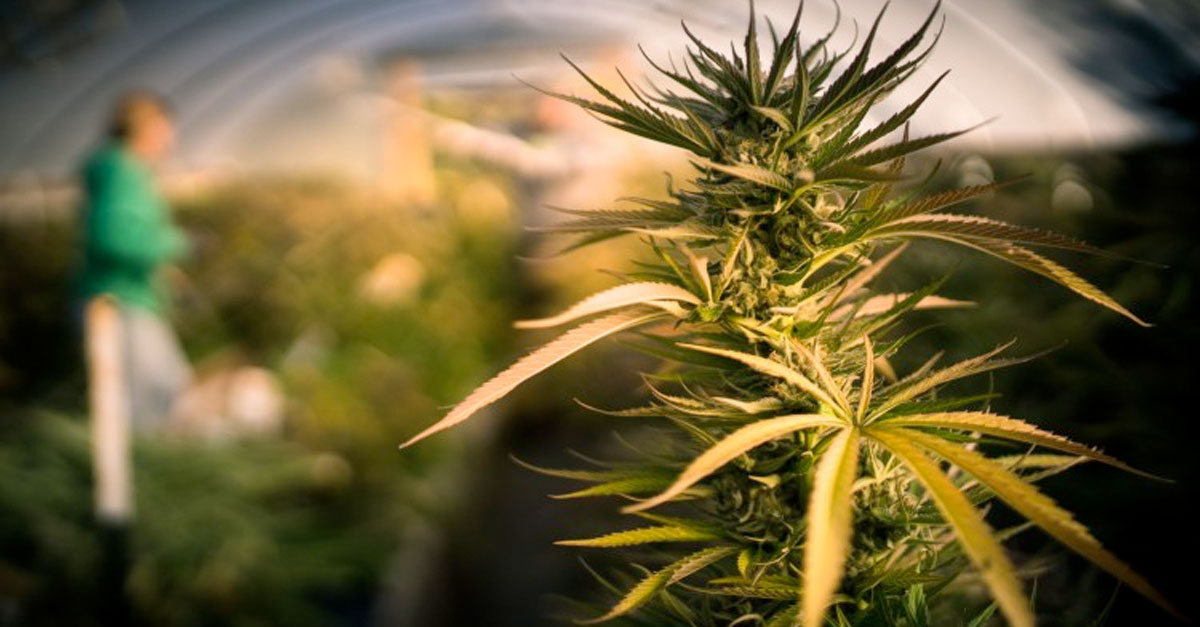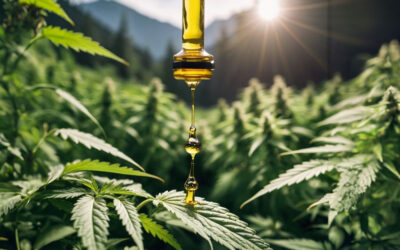The Cannabis Entourage Effect–a Basic Primer

In our last article about the differences between cannabinoids, we lightly touched on “the entourage effect” when looking at CBC (cannabichromene). We discussed how CBC’s value comes from combining it with whole-plant cannabis to contribute to the entourage effect. Let’s dig a bit deeper into what that means.
What Is the Entourage Effect?
The entourage effect is the theory that chemical compounds in cannabis work synergistically to create specific benefits and effects. For example, it is believed that isolated cannabinoids are less effective than those that are combined as “whole-plant products.” Indeed, many people look for products like “full-spectrum” extract, capsules, or edibles since there’s a good chance they may work better than isolated versions of these products. But why?
Many scientists have debated the entourage effect over the years. Researchers Shimon Ben-Shabat and Mechoulam coined the term “entourage effect” in a 1999 study. Mechoulam and Shabat suggested that this phenomenon could explain why botanical drugs may be more effective than isolated plant components.
As a result, cannabis companies are taking advantage of the entourage effect in marketing their products. Employees at marijuana dispensaries often help customers make their selection based on the combination of cannabinoids and terpenes in each strain or product.
CBD, THC, and the Entourage Effect
We’ll use the two compounds you’re already familiar with to illustrate the entourage effect in cannabis: THC and CBD. An extract containing near-equal levels of THC and CBD was given to patients with cancer pain in a study in 2010. Those who received the THC/CBD combination reported less pain than those who received the compounds individually.
In addition to CBD and THC, cannabis contains over 400 chemical components that work synergistically to enhance the effects of the plant. Some of these compounds we know a lot about. But others we are only just beginning to explore. It is thought that the interaction of cannabinoids, flavonoids, terpenes, and other compounds produces unique health benefits. And yes, it’s possible to cross terpenes, flavonoid compounds, and cannabinoids in different ways for different effects. If combined correctly, each blend can theoretically create a new pain-relieving, stress-relieving cocktail.
Let’s quickly define cannabinoids, terpenes, and flavonoids as a refresher.
Cannabinoids
Cannabis naturally produces phytocannabinoids (also called cannabinoids). These interact with particular receptors in the body’s endocannabinoid system (ECS). This system regulates various functions, such as sleep, memory, appetite, and mood.
THC and CBD are the most well-known cannabinoids in the plant. However, there are other cannabinoids present as well. Some of these include cannabigerol (CBG), cannabinol (CBN), and cannabichromene (CBC). These compounds are found in minimal amounts within the plant, but when combined with other compounds, they can have beneficial effects.
Terpenes
Natural compounds called terpenes can be found in plants, fruits, and herbs. Their role is to give a plant its aroma and flavor. The complex smells and tastes of various cannabis strains stem from terpenes. The central hypothesis is that the terpene profile (the dominant terpenes in a strain) works in tandem with the cannabinoids (THC, CBD, etc.) to produce some of the effects people associate with different strains.
Flavonoids
Combined with terpenes, flavonoids also create scents and determine strain colors in a cannabis plant. There have been over 20 different flavonoids found in cannabis plants. Additionally, flavonoids protect plants from pests, UV rays, and some diseases. Finally, studies show that flavonoids may provide medicinal benefits when combined with terpenes and cannabinoids.
Does Science recognize the Entourage Effect?
The Entourage Effect is supported more by anecdotes than hard science. However, as the cannabis industry grows, so does research and evidence. For example, there is a well-known review titled “Taming THC: potential cannabis synergy and phytocannabinoid-terpenoid entourage effects.” Written by Dr. Ethan Russo, it offers detailed explanations of how the entourage effect works.
According to Dr. Russo’s review, common cannabis compounds have proven benefits. And based on their pharmacology, they can have synergistic effects. In one example, a staph infection caused by bacteria was inhibited by the cannabinoids CBD and CBG. What if they were combined with the MRSA-fighting terpene pinene or prepared with terpenes that increase skin permeability to make them even more effective? The possibilities are exciting!
In 2001, Russo and McPartland published “Cannabis and Cannabis Extracts: Greater Than the Sum of Their Parts.” Again, this study had significant support for the “entourage effect” hypothesis. The research looked at secondary compounds in cannabis. Specifically, how they enhanced the beneficial effects of THC by reducing some of the negative ones. That included anxiety, cholinergic deficits, and immunosuppression caused by THC.
Closing Thoughts
Many medical marijuana advocates strongly suggest patients use whole-plant, full-spectrum cannabis products whenever possible. While the entourage effect is still theoretical, many experts claim it to be sound. As more information is uncovered, we will likely learn many different ways that the chemicals in cannabis can be combined to create specific benefits and effects.
Latest GreenCore News
CBGA: The Mother of All Cannabinoids
CBGA: The Mother of All Cannabinoids CBGA, often called the "mother of all cannabinoids," is gaining significant attention. This foundational cannabinoid is showing promise in reducing seizures and treating conditions like insomnia and chronic pain. Recently, its...
Cannabis Concentrate Spotlight: Rick Simpson Oil
Cannabis Concentrate Spotlight: Rick Simpson Oil Rick Simpson Oil has become a cornerstone in the world of cannabis products. Renowned for its versatility, this concentrate offers a multitude of benefits for both medical patients and recreational users.In this blog,...
CBD 101: Properties, Production, and Potential
CBD 101: Properties, Production, and Potential CBD has rapidly evolved from a little-known compound to a household term. But while it has become a ubiquitous term, many remain unclear on what cannabidiol actually is. In this blog, Green Core Specialty Insurance...
Contact Us
Office Location
1600 Golf Road, Suite 1200
Rolling Meadows, IL 60008
Office Hours
M-F: 8am - 6pm
Phone
847-201-4600



